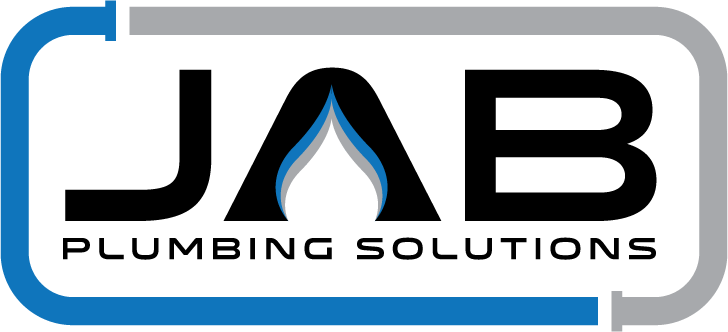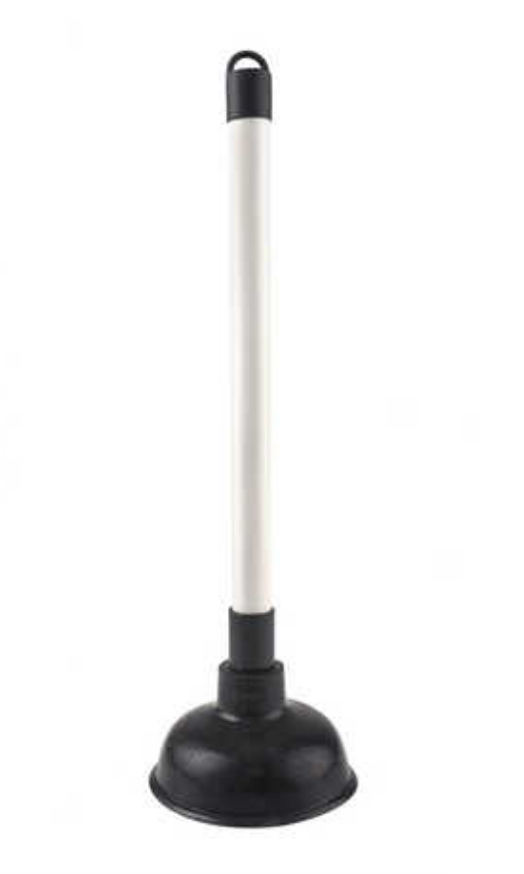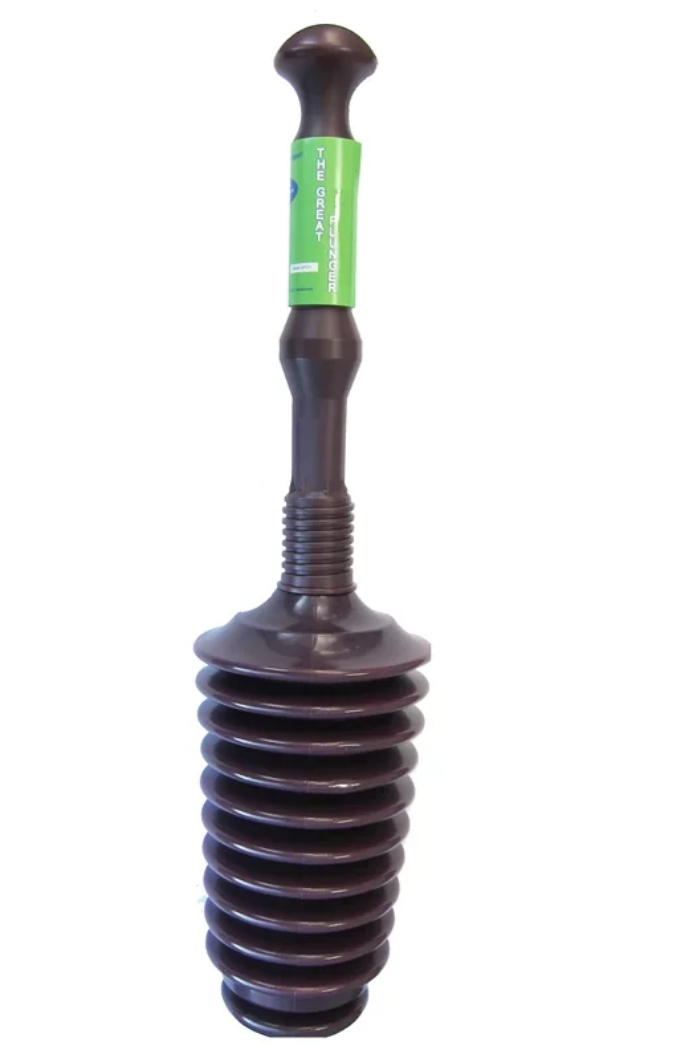What is a plunger?
A drain plunger is a suction cup attached to a stick that is either made of plastic or timber. Plungers come in a range of different sizes for different drains.
Plungers are a great tool for unblocking drain blockages including blocked sinks, slow draining toilets or any other drain in the home that isn’t functioning at its normal capacity.
Plunging is the first method we suggest to homeowners who want to attempt to unblock a drain themselves, without having to call in a plumber. Plungers are cheap, effective and readily available. They are also superior to other DIY drain cleaning methods such as chemical drain cleaners which are dangerous and corrosive.
A plunger will work on a variety of blocked drains as well as partial drain blockages. You can use a drain plunger to unblock a toilet, a blocked sink drain, the shower drain or any other minor blockage. A minor blockage can be described as a small clog that doesn’t have any impact on the plumbing infrastructure. For example, a buildup of food scraps in the kitchen sink or a toilet that is blocked due to too much toilet paper being used.
A drain plunger, however, is not recommended for major blocked drains. For example, some drain blockages are caused by damage to the plumbing infrastructure such as a collapsed sewer pipe or extensive tree root growth. Even a fatberg, which is a consolidated clump of non-organic matter (wet-wipes, tampons etc) that has been bound together by oil, is unlikely to be remedied by plunging.
Different types of plungers and their uses
1 - Cup plunger or sink plunger
A cup plunger is the most common kind of plunger, and the types that probably comes to mind when you think of a plunger. These plungers are most effective for drains with a flat surface such as a kitchen sink, bathroom sink or shower. The flat surface is necessary so that the cup forms a tight seal over the drain opening, generating the vacuum necessary to dislodge the clog. A cup plunger is able to create both a positive and negative pressure. Positive pressure is created by forcing the cup down and negative pressure is created by the vacuum effect when pulled away from the fixture.
Jack hammer sink cup plunger from Woolworths $3.50
2 - Flange plunger or toilet plunger
Flange plungers, also known as a toilet plunger, have a cup on the end similar to a sink plunger, with the addition of a soft rubber flap (know as a flange) that folds out from inside the cup. Toilet plungers are specifically made to get a good seal around the toilet drain, which has a curved surface as opposed to a flat surface. The flap, provides flexibility to allow it to fit just about any drain. However, for hygiene reasons we recommend purchasing both a flanger plunger and a regular cup plunger to keep in the home. Make sure each is clearly labelled so they don’t get mixed up.
Cobra Products 302 15cm Heavy Duty Force Cup Plunger with Wood Handle from Kogan, $53.48
3 - Accordion plunger
The accordion plunger is designed for unclogging blocked toilets only. Unlike the flange plunger, the accordion plunger won’t work on other kinds fo drains around the home. The accordion plunger is made from a moulded piece of plastic with several flexible accordion-style ridges and a small cup on the bottom. Accordion plungers create more force than flange plungers, however they are harder to use. The plastic is very hard, so creating a vacuum seal over the drain can be challenging.
Handihome accordion toilet plunger available from Bunnings for $19.95
Haron Master Accordion Plunger available from Total Tools for $26.00.
Haron Master Accordion Plunger MP1600 from eBay for $29.80
Which plunger is the best?
Like anything, when it comes to selecting the correct drain plunger, you get what you pay for. While you can get very cheap drain plungers for under $5, you’re better off paying a few extra dollars for a better plunger. It will get the job done and will last longer in case you have another drain to unblock in the future. It’s also important to select the correct plunger for the type of blocked drain - eg a flange plunger for a toilet and a cup plunger for a sink.
Where can I buy toilet plungers and drain plungers?
Drain plungers and toilet plungers are available from most supermarkets, hardware stores and homeware stores. See list above.
Plunging tips:
Cover the drain opening completely and let some of the air out of the plunger first. If you leave too much air in the plunger the clog won’t receive as much force.
Ensure a good, tight seal. Plunging uses suction power to dislodge clogs so a tight seal is essential. You can add a small amount of vaseline around the rim of a cup plunger to help get a better seal.
Submerge the plunger by running a small amount of water in the sink—enough to cover the cup of the plunger. If the clog is on your toilet drain, don’t flush it to add water unless you want to create a mess. Add enough water from a bucket until you can submerge the plunger.
Position the plunger so that the plunger handle is straight and vertical. If you have the plunger on an angle you won’t generate as much pressure and you also run the risk of breaking the seal and having to start over.
Thrust the plunger up-and-down using force. The suction force of the upstroke is just as important as that of the downstroke. Maintain the seal between the rubber plunger cup and the sink surface throughout this action.
Check that water is draining freely. You may feel or hear the clog dislodge. Once this happens either run some water down the drain for a while, or flush the toilet a few times to ensure the clog is gone for good.
Don’t give up! If it’s not working straight away, keep going. Tough clogs can take a little longer to clear.
For safety reasons, never use a plunger on a drain or toilet after pouring chemical drain cleaners down. Plunging can cause the dangerous chemicals to splash back leading to irritation or burns to your skin eyes and throat.
How to unblock a toilet with a plunger
How to unblock a sink drain with a plunger
What to do if plunging doesn’t work
If plunging the blocked drain or toilet doesn’t work, there could be a larger issue in your home’s plumbing system. It’s best to call a licensed local plumber out to assess the issue. Failing to do so can lead to bigger problems as blocked drains and clogged toilets only get worse with time. JAB Plumbing Solutions are Sydney’s leading blocked drain plumbers. We specialise in all kinds of drain repairs and drain cleaning. Give us a call for more information or an obligation free quote 1800 225 552.
RELATED ARTICLES:
















